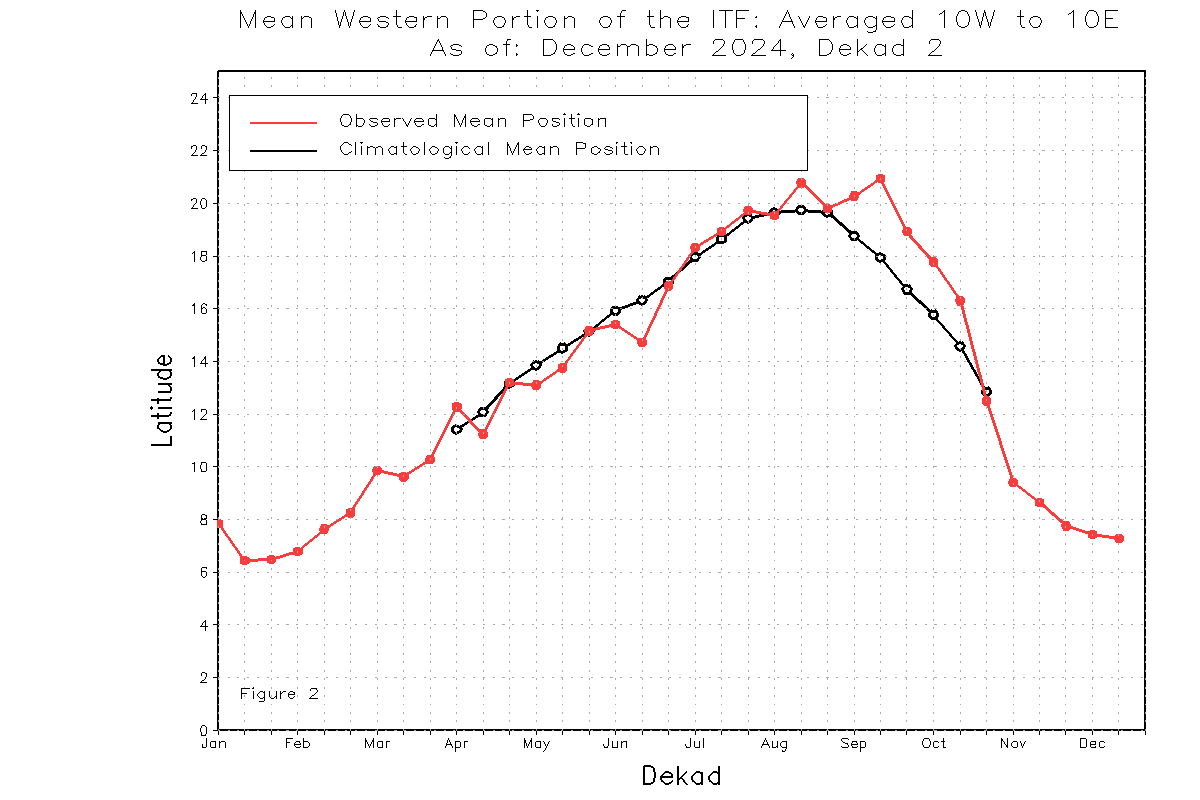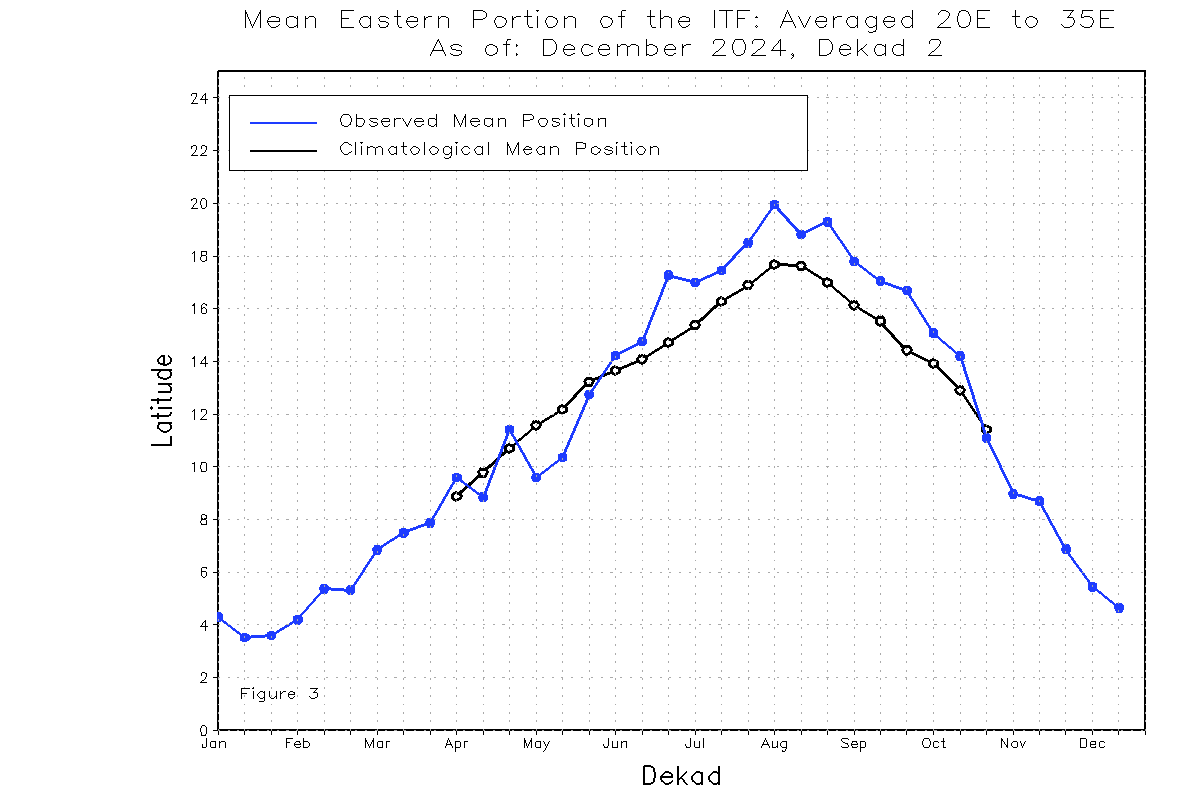

2024's eastern ITCZ started running significantly north of average in late June, which persisted during the entire hurricane season. The western ITCZ was also northward-displaced during September and October, the peak MDR season.
While this northward-displaced ITCZ resulted in anomalously early and late MDR hurricanes (Beryl, Kirk, Leslie), it was generally believed to have contributed to a surprisingly quiet peak season: waves were too far north when entering the Atlantic, and entrenched too much dry air from the Sahara even while still in Africa.
So how does 2025 look?


Curiously, while the eastern ITCZ had been south of normal earlier this year, it rose to climo latitude during the first 10 days of July. (The western ITCZ has been mostly near-normal, but IIRC, people thought that the eastern ITCZ was more impactful.)
Note that ITCZ position itself isn't the sole contributor of wave position, dry air and "wave-breaking":
- 2022: North displaced during September, but largely normal during the storm-free August.
- 2021 (table only): The season had notable MDR activity (Larry, Sam), much beyond what SSTAs and other indicators would predict, which is often attributed to a strong Atlantic Nino. ITCZ data is hard to read, but looks like the western and eastern halves were south-displaced at different times of the peak season. This may have contributed to storms consistently forming at low latitudes during most of it (Fred, Grace,
- 2020: Another "odd" hyperactive year with many MDR storms struggling (other than Teddy). ITCZ was very north-displaced in August, possibly resulting in Laura cutting right through the Greater Antilles. But it was fairly normal (with western ITCZ even south of climo) in mid-September when the CV parade happened, yet the storms still formed too far north. So ITCZ isn't the main culprit.







